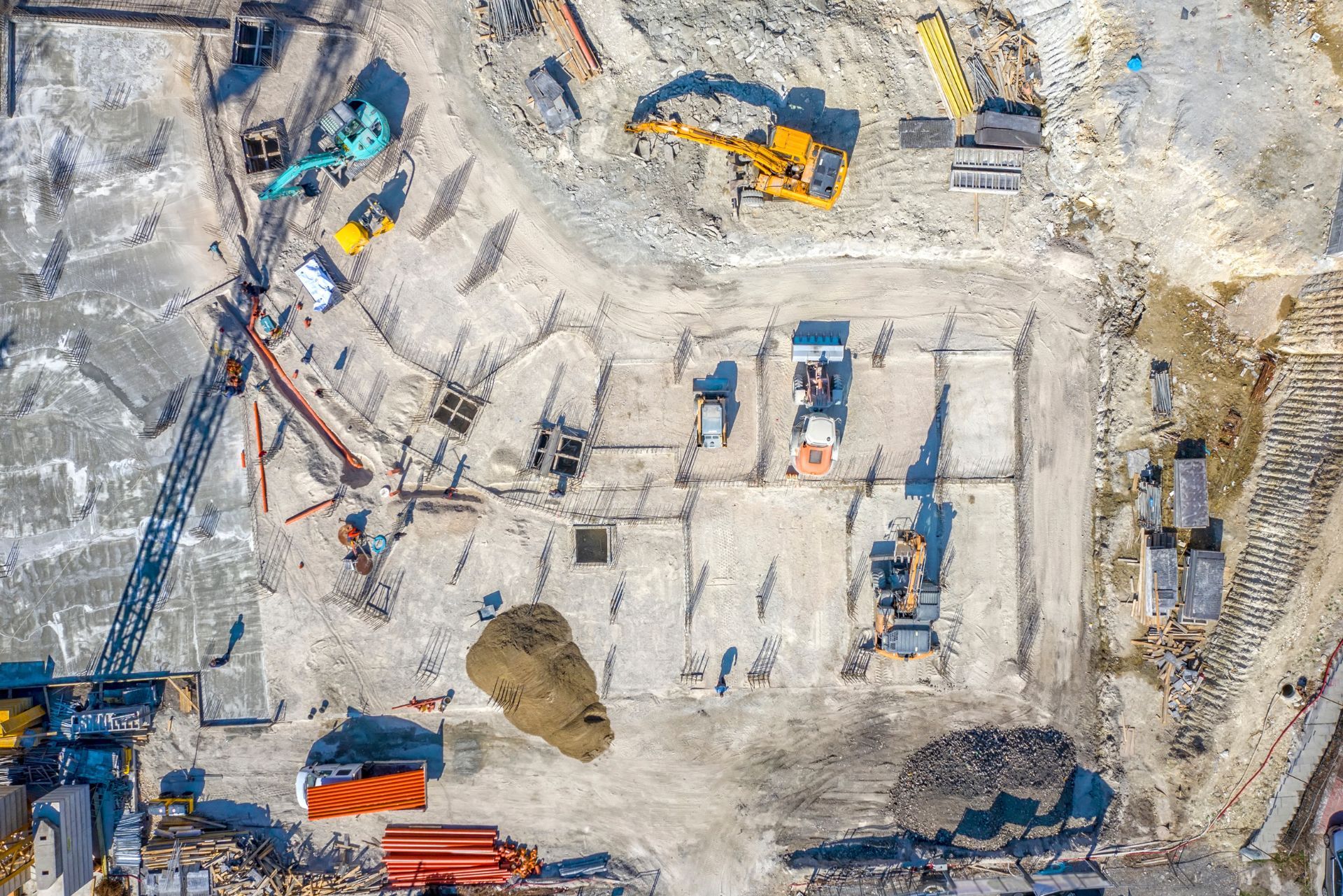The Indiana Site Improvement Bond is a crucial component for contractors and developers involved in construction projects across the state. This bond serves as a financial guarantee that ensures compliance with local regulations and standards for site improvements. Understanding the intricacies of this bond can significantly impact project success and legal compliance. This article delves into everything you need to know about the Indiana Site Improvement Bond, including its purpose, requirements, and benefits.
What is the Indiana Site Improvement Bond?
The Indiana Site Improvement Bond is a type of surety bond that developers and contractors must obtain before commencing site improvement projects. These projects can include anything from grading and excavation to the installation of utilities and landscaping. The bond acts as a safeguard for municipalities and local governments, ensuring that the work is completed according to the approved plans and within the stipulated timeframe.
In essence, the bond protects the public interest by providing a financial remedy in case the contractor fails to fulfill their obligations. If the contractor does not complete the project as agreed, the bond can be claimed by the local government to cover the costs of completing the work or rectifying any issues. This mechanism not only serves as a financial safety net but also encourages contractors to maintain high standards throughout the construction process, knowing that their reputation and financial stability are at stake.
Purpose of the Bond
The primary purpose of the Indiana Site Improvement Bond is to ensure that contractors adhere to local regulations and standards. This bond helps maintain the quality of construction and protects the community from subpar work that could lead to safety hazards or decreased property values. Moreover, it serves as a financial assurance that the project will be completed as planned, promoting accountability among contractors. The bond also plays a crucial role in fostering trust between developers and the community, as it demonstrates a commitment to responsible development practices and adherence to local codes.
Who Needs the Bond?
Typically, contractors and developers engaged in site improvement projects within Indiana are required to obtain this bond. This includes those working on residential, commercial, and industrial developments. Local governments may have specific requirements regarding the bond amount and conditions, so it's essential for contractors to check with the relevant authorities before starting a project. Additionally, understanding the nuances of the bond process can be beneficial for contractors, as it may influence their ability to secure future projects. By establishing a solid track record of compliance and timely project completion, contractors can enhance their reputation and potentially lower their bonding costs in subsequent endeavors.
Furthermore, the bond process often involves submitting detailed project plans and timelines, which not only helps in securing the bond but also aids contractors in organizing their work efficiently. This proactive approach can lead to smoother project execution and can minimize delays caused by unforeseen issues. As such, the Indiana Site Improvement Bond is not merely a regulatory hurdle; it is an integral part of the planning and execution of site improvement projects that ultimately contributes to the long-term success of developments in the state.

Requirements for Obtaining the Bond
Obtaining an Indiana Site Improvement Bond involves several key requirements that contractors must meet. Understanding these requirements is crucial for a smooth application process and successful project execution.
Bond Amount
The bond amount varies depending on the scope and scale of the project. Local municipalities typically set these amounts based on estimated project costs. Contractors should consult local regulations to determine the specific bond amount required for their project. Generally, the bond amount is designed to cover potential costs associated with project completion and compliance. In some cases, municipalities may also consider factors such as the project's environmental impact and the potential for public disruption when determining the bond amount, ensuring that the bond reflects the true risk associated with the project.
Application Process
The application process for the Indiana Site Improvement Bond involves several steps. Contractors must first gather necessary documentation, which may include proof of licensing, financial statements, and project plans. Once the documentation is complete, contractors can submit their application to a surety company.
It's important to note that surety companies will evaluate the contractor's creditworthiness and experience before issuing the bond. This evaluation helps ensure that only qualified contractors are granted bonding, thus protecting the interests of the local government and the public. Additionally, contractors may benefit from establishing a strong relationship with their surety provider, as this can lead to more favorable terms and quicker processing times in future projects.
Fees and Costs
The cost of obtaining an Indiana Site Improvement Bond can vary based on several factors, including the bond amount, the contractor's credit score, and the surety company's policies. Generally, contractors can expect to pay a percentage of the total bond amount as a premium. This premium is typically between 1% to 10% of the bond value, depending on the contractor's financial stability and experience. Furthermore, contractors should be aware that additional fees may apply, such as application fees or administrative costs, which can further impact the overall expense of securing the bond.
Moreover, it’s essential for contractors to budget for these costs early in the project planning phase. By doing so, they can avoid unexpected financial burdens later on. Some contractors may also explore options for reducing their bond costs, such as improving their credit score or demonstrating a strong history of project completion, which can lead to lower premiums and more favorable bonding terms in the long run.
Benefits of the Indiana Site Improvement Bond
The Indiana Site Improvement Bond offers numerous benefits to contractors, developers, and local governments alike. Understanding these advantages can help stakeholders appreciate the importance of this bond in the construction process.
Protection for Local Governments
One of the primary benefits of the Indiana Site Improvement Bond is the protection it offers to local governments. By requiring contractors to obtain this bond, municipalities can ensure that projects are completed in accordance with local regulations. If a contractor fails to meet their obligations, the bond provides a financial safety net, allowing the local government to address any issues without incurring additional costs. This assurance not only helps maintain the integrity of community standards but also fosters a sense of accountability among contractors, encouraging them to adhere to best practices throughout the project lifecycle.
Increased Credibility for Contractors
For contractors, having an Indiana Site Improvement Bond can enhance credibility and trustworthiness in the eyes of clients and local authorities. It demonstrates a commitment to quality work and compliance with regulations, which can be a significant advantage in a competitive market. Clients are more likely to choose a bonded contractor, knowing that their project is backed by a financial guarantee. Furthermore, being bonded can serve as a marketing tool, allowing contractors to differentiate themselves from their unbonded competitors. This distinction can lead to increased business opportunities, as clients often prioritize working with professionals who exhibit a strong sense of responsibility and reliability.
Facilitating Project Financing
Obtaining a site improvement bond can also facilitate project financing. Many lenders require contractors to have bonding in place before approving loans for construction projects. This requirement helps lenders mitigate risk, as the bond ensures that the project will be completed as planned. Consequently, having a bond can open doors to financing opportunities that might otherwise be unavailable. Additionally, the presence of a bond can streamline the loan application process, as lenders may view bonded contractors as lower-risk borrowers. This can lead to more favorable loan terms, including lower interest rates and higher borrowing limits, ultimately benefiting the contractor's bottom line and enabling them to take on larger projects.
Encouraging Sustainable Practices
Another significant advantage of the Indiana Site Improvement Bond is its potential to encourage sustainable construction practices. As local governments increasingly prioritize environmental responsibility, the bond can serve as a tool to ensure that contractors adhere to eco-friendly standards and regulations. By requiring compliance with sustainability guidelines, the bond helps promote practices such as waste reduction, energy efficiency, and the use of sustainable materials. This not only benefits the environment but also positions contractors as leaders in the green building movement, appealing to a growing demographic of environmentally conscious clients.
Enhancing Community Relations
Moreover, the Indiana Site Improvement Bond can play a crucial role in enhancing community relations. When local governments enforce bonding requirements, they demonstrate a commitment to protecting the interests of their constituents. This fosters trust and transparency between the government and the community, as residents can feel assured that construction projects will be completed responsibly and with minimal disruption. Additionally, when contractors are held accountable through bonding, it can lead to better communication and collaboration with local stakeholders, resulting in projects that are more aligned with community needs and expectations.
Common Challenges and Considerations
While the Indiana Site Improvement Bond provides many benefits, there are also challenges and considerations that contractors should be aware of. Being informed about these potential pitfalls can help ensure a smoother project experience.
Understanding Local Regulations
One of the most significant challenges contractors face is understanding the specific regulations and requirements set forth by local governments. Each municipality may have different bonding requirements, project specifications, and compliance standards. Failing to adhere to these regulations can result in delays, fines, or even project termination. Therefore, contractors must conduct thorough research and maintain open communication with local authorities throughout the project. Additionally, it's beneficial for contractors to engage with local trade associations or attend workshops that focus on regulatory changes. Such proactive measures can provide valuable insights and updates, ensuring that contractors remain compliant and informed about evolving local laws.
Financial Implications
While the bond serves as a financial safety net, obtaining it also comes with costs that contractors must consider. The premium paid for the bond can add to the overall project expenses, which may impact budgeting and profitability. Contractors should carefully assess these costs and factor them into their project estimates to avoid financial strain. Furthermore, it’s essential to consider the potential for fluctuating interest rates and changes in the market that could affect the cost of securing bonds. Developing a comprehensive financial plan that includes these variables can help contractors navigate the complexities of project financing and ensure they remain competitive in their bids.
Potential for Claims
In the unfortunate event that a claim is made against the bond, contractors may face reputational damage and financial repercussions. Claims can arise from various issues, such as failure to complete the project on time or non-compliance with local regulations. Contractors must take proactive measures to ensure that their work meets all requirements and maintain open lines of communication with stakeholders to mitigate the risk of claims. Additionally, implementing a robust project management system can help track progress and compliance, making it easier to address any issues before they escalate into claims. Regularly scheduled project reviews and stakeholder meetings can also foster transparency and trust, which are crucial in minimizing misunderstandings and potential disputes.

Conclusion
The Indiana Site Improvement Bond is an essential tool for contractors and developers involved in construction projects across the state. By understanding the purpose, requirements, and benefits of this bond, stakeholders can navigate the complexities of the construction process more effectively. While challenges exist, the advantages of obtaining a site improvement bond far outweigh the potential pitfalls.
Ultimately, the bond not only protects local governments and the public but also enhances the credibility and financial viability of contractors. As the construction landscape continues to evolve, staying informed about bonding requirements and best practices will be crucial for success in Indiana's dynamic construction industry.
Article By: Ryan Spalding
Licensed Insurance Agent & Bond Specialist
Contact Us

